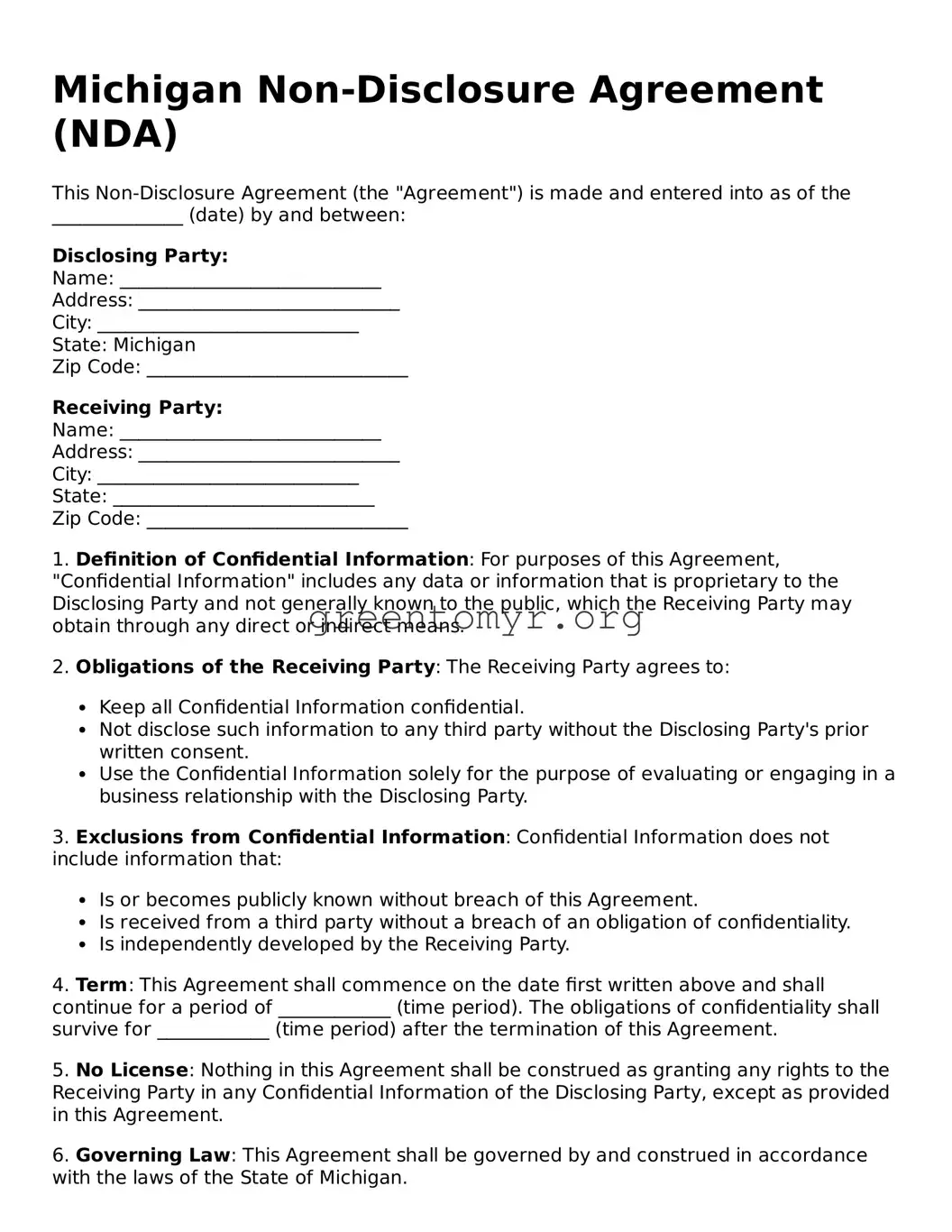Michigan Non-Disclosure Agreement (NDA)
This Non-Disclosure Agreement (the "Agreement") is made and entered into as of the ______________ (date) by and between:
Disclosing Party:
Name: ____________________________
Address: ____________________________
City: ____________________________
State: Michigan
Zip Code: ____________________________
Receiving Party:
Name: ____________________________
Address: ____________________________
City: ____________________________
State: ____________________________
Zip Code: ____________________________
1. Definition of Confidential Information: For purposes of this Agreement, "Confidential Information" includes any data or information that is proprietary to the Disclosing Party and not generally known to the public, which the Receiving Party may obtain through any direct or indirect means.
2. Obligations of the Receiving Party: The Receiving Party agrees to:
- Keep all Confidential Information confidential.
- Not disclose such information to any third party without the Disclosing Party's prior written consent.
- Use the Confidential Information solely for the purpose of evaluating or engaging in a business relationship with the Disclosing Party.
3. Exclusions from Confidential Information: Confidential Information does not include information that:
- Is or becomes publicly known without breach of this Agreement.
- Is received from a third party without a breach of an obligation of confidentiality.
- Is independently developed by the Receiving Party.
4. Term: This Agreement shall commence on the date first written above and shall continue for a period of ____________ (time period). The obligations of confidentiality shall survive for ____________ (time period) after the termination of this Agreement.
5. No License: Nothing in this Agreement shall be construed as granting any rights to the Receiving Party in any Confidential Information of the Disclosing Party, except as provided in this Agreement.
6. Governing Law: This Agreement shall be governed by and construed in accordance with the laws of the State of Michigan.
7. Entire Agreement: This Agreement constitutes the entire understanding between the parties concerning the subject matter hereof, superseding all prior discussions, agreements, or understandings of any kind.
IN WITNESS WHEREOF, the parties hereto have executed this Non-Disclosure Agreement as of the date first above written.
Disclosing Party Signature: ____________________________
Print Name: ____________________________
Title: ____________________________
Receiving Party Signature: ____________________________
Print Name: ____________________________
Title: ____________________________
